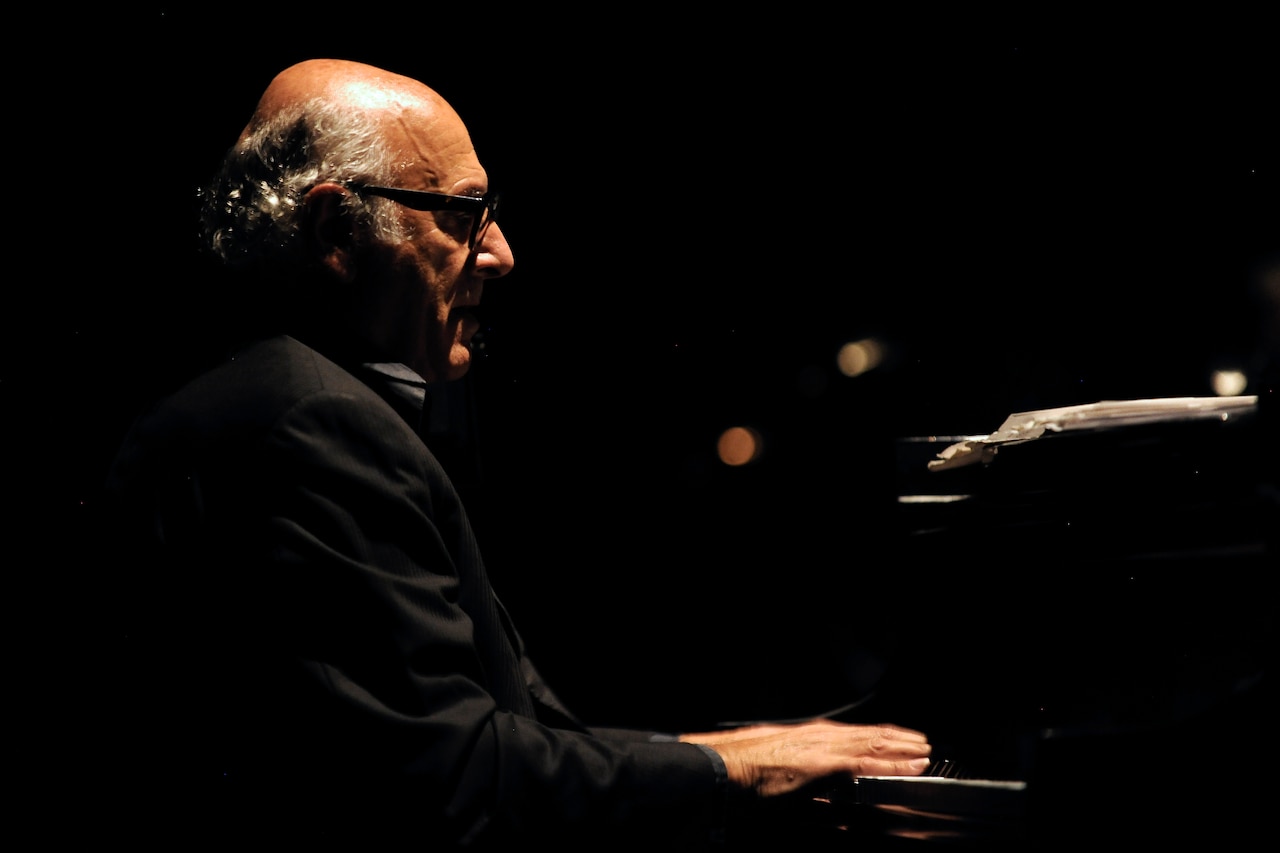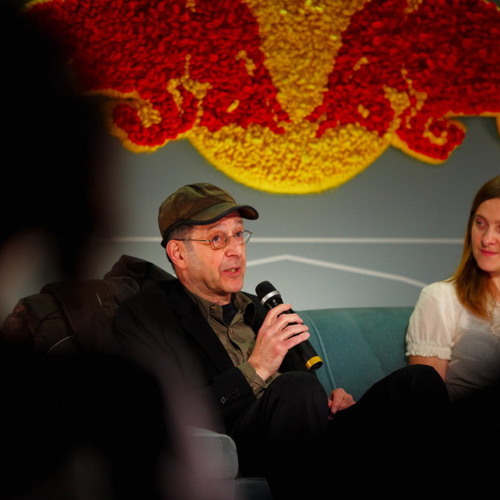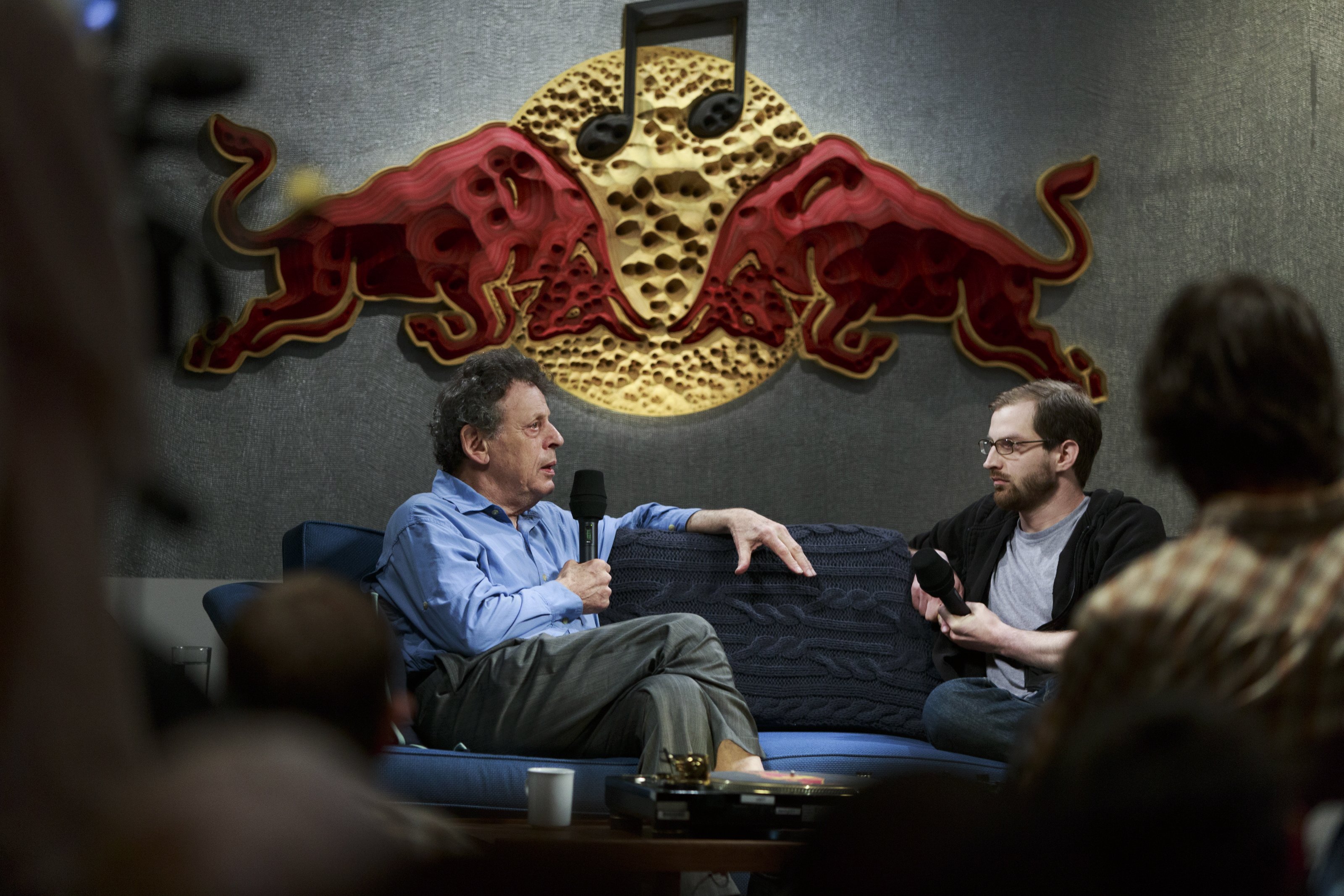Interview: Michael Nyman
The influential British composer on coining “minimalism” and working with Brian Eno

Born in Stratford, London in 1944, Michael Nyman has carved out a lengthy career as one of Britain’s most innovative and celebrated composers. After pursuing a formal classical education at the Royal Academy of Music, he spent time as a critic and musicologist coining the term “minimalism.” In 1969 he formed his own ensemble, formerly known as the Campiello Band, who solidified much of his experimental compositional work over the following three decades, including a number of scores with legendary director Peter Greenaway. His unforgettable music for Jane Campion’s The Piano in 1993 sold over three million copies, and in these excerpts from his interview for RBMA Radio, Nyman’s restless musical mind sent him on a journey from the heydays of minimalism and working with Brian Eno to video games and Kenji Eno.
How would you describe what you do?
Well, when I get up in the morning and I have had breakfast and I sit down and work, what I’d do is write music. So that is my main occupation, and I do it in the old-fashioned manner, with a pencil and rubber and manuscript paper. Sometimes I’m in the recording studio. I made my first multi-track recording with Brian Eno in 1970. I have also written music directly with a music program onto a Mac.
But when I feel at my most creative, I have a camera in my hands and I’m out in the streets either being a street photographer or a street filmmaker, if there’s such a thing. My current favorite work is a piece called War Work. Eight songs with film, which combines all these interests of mine together in one 65 minute work.
What was your first instrument?
I had a music teacher at my primary school in Chingford, and he discovered somewhere, somehow, some evidence of a musical talent. He then set out, when I was eight, to teach me the piano, the recorder, music theory, probably a little bit of singing. It was what we used to call “Musical Appreciation.” One thing he didn’t teach me was to be a composer, so I had this musical training from the age of eight to 17 and, as a composer, I’m basically self-taught.
How do you feel about being classified as a minimalist composer?
Well, I think the word “minimalist” in minimal music is very interesting. One of the many careers I had before I became a composer was as a music critic. In October 1968 I went to a concert here in London, and there was a piece of music by a more or less totally unknown Danish composer called Henning Christiansen, and it struck me that the piece of music was the musical equivalent of minimal art.
It was a throwaway kind of half-sentence or reference. But, since that throwaway moment in 1968, the term “minimal music” has been applied to a whole bunch of music, mostly by American composers and European composers who are said to be influenced by those American composers. But as I say, when I invented the term “minimal music,” I was reviewing a specific performance by a Danish composer that no one had ever heard of.
I made a particular kind of fusion which had to with my training as a composer and as a musician, and also as a human being brought up on the streets of Notting Hill in the ’60s and ’70s, which was a fusion or confusion of minimalism and baroque music. In the ’60s, I was a musicologist and I was also very aware of pop music. So, I was very aware of the Beatles, the Everly Brothers and the Velvet Underground. I saw classic Pink Floyd performances.
There’s more melody in my music than any other minimalist.
I have a brain that deals in musical analysis, and there is a serious connection between contemporary pop music and Baroque music and the new tradition of minimal music. So, a piece of minimalism by me is obviously minimal, but it refers back to 17th century variation techniques and forward to techniques of writing pop music. There’s a lot of melody. There’s more melody in my music than any other minimalist.
One of the most famous pieces of music I wrote before the soundtrack to The Piano was called “Memorial” which was used by Peter Greenaway in The Cook, The Thief, His Wife and Her Lover, which was based on a piece that Purcell wrote in 1692. I kind of observed it, reedited it and rewrote it as a memorial to the victims of the Heysel Stadium disaster in 1985, and then unfortunately had to recycle it for the victims of the Hillsborough disaster in 1989. Just a couple of years ago, I turned it into my Symphony Number 11, which is subtitled Hillsborough Memorial. So, there’s a lot of messing around in popular culture, pop music, classical music, minimalism and it kind of makes... No one else really does it, or when they try to, they don’t do as well as I can.
Can you talk a bit about your relationship with Peter Greenaway?
I met in 1961 when I was a student in the Royal Academy of Music. He was the best friend of my sister’s best friend. We were very close friends. He had a big room in the back of his house in East Finchley and he used to show films on Friday night, Saturday night.
He was an editor of the Central Office of Information, making government propaganda films and little independent experimental films. In 1976, when he seemed to want an original soundtrack written by a living composer, he turned to me because I was the only living composer he knew. So, in the same year I founded the Campiello Band, I also became Peter Greenaway’s composer. I also wrote a soundtrack for a kind of soft porn film called Keep It Up Downstairs, which is another story.
Greenaway was making a lot of very erudite, very unwatched but very watchable films like A Walk Through Age, The Falls and Vertical Features Remake. So I wrote all these long soundtracks for him. People didn’t really watch these films. Then he wrote his first feature film script, The Draughtsman’s Contract, in 1982. I would say more people saw the first evening of the screening of The Draughtsman’s Contract than had all the films he’d made since 1976. So the attitude towards Greenaway totally changes in 1983, and obviously film is a fantastic medium for a composer to have his or her music used and presented and promoted. I guess we didn’t look back, so we worked together from 1976 to 1991. I think we did five feature films together, the last of which was Prospero’s Books.
I discovered that she was good at playing slow music and she wasn’t good at playing Michael Nyman.
What was your first commercially released work?
It was called Decay Music, which was produced by Brian Eno. Brian was brilliant. He persuaded Polydor that he should produce – or curate, as we would call it now – a label of what was still called “experimental music.” I think there are ten releases from 1975 to about 1978.
At that time, I’d written precisely two pieces of music. I played him one piece called “Bell Set No. 1,” which is a kind of fake Steve Reich percussion equivalent for four organs. We recorded that and Brian said, “I’d put this as the B-side of someone else’s album.” I said, “I want the whole album to myself.” He said, “What else do you have?” I said, “I have this piece called ‘1 – 100,’” which was the soundtrack to my very first Greenaway film.
It was a solo piano piece where you sustain a hundred chords running from the top of the piano to the bottom of the piano. When the sound has died away, you play the next chord. It’s an old Morton Feldman idea. So, we recorded it. Lasted about 18 minutes and Brian said, “Is that it?” I said, “Yes,” and he said, “Well, that’s not very interesting,” and I said, “Well, I have this idea,” which I came up with on the spur of the moment. I said, “Let’s play four versions of the piece simultaneously,” so they all existed on their kind of own time and space and there’s a lot of overlapping of chords.
After I was done, something really fascinating happened. Brian sent me a dub or copy of the recording to check over. I put this 7-inch reel on it and started listening to it. I really enjoyed the mix of the piece, and listened for 15, 20, 25 minutes and I thought, “What’s happening? This is an 18-minute piece and I’m still listening to it at 30 minutes.”
I realized that I was listening to it at half-speed, and it sounded fantastic. I immediately rang Brian and said, “Look, I have accidentally created a sound world that we didn’t intend and we have to release this piece. Play it at half-speed!”
When you composed the soundtrack to The Piano, did you get to practice alongside Holly Hunter?
The piano music was written specifically for Holly Hunter. She was an amateur pianist. She had not really played since she was about 16. Her boyfriend at the time had bought her a piano, and she found the script for The Piano after that and forced Jane Campion to give her the part.
Holly sent me some music that she played. Bach and Chopin. I kind of discovered that she was good at playing slow music and she wasn’t good at playing Michael Nyman. So I wrote, in consultation with Jane and the script, some very slow music. The music that you hear in the film, the piano playing, is Holly Hunter. The performance on the soundtrack album is me. But, although I wrote the music, my attitude towards it and my performance style is totally conditioned by Holly. So, the famous piece “The Heart Asks Pleasure First,” which I end up playing 10, 15, 20 times a year in concert, I play in the manner that she played it.
Can you talk about your work on The Man Who Mistook His Wife for a Hat?
The interesting thing about Oliver Sacks is that in 1986, when he’d published The Man Who Mistook His Wife for a Hat, nobody knew anything about neurology. The Man was a huge breakthrough, not only for him as a neurologist and writer, but for our knowledge of what happens in the human brain. I remember when I read the title case study, I realized that it had to be an opera because the subject was music.
The subject of The Man lost all powers of recognizing anything familiar. The only thing that he’d recognize or would trigger some kind of response was music. I thought this was a great subject for an opera. What is the subject of the opera? Partly discovering Alzheimer’s through examination techniques, but also using music as a subject in its own right.
It gave me the opportunity to create two forms of music in the same opera. I created the music of the opera, and I also created the music of the Alzheimer’s sufferer. I chose to make that latter music his recollection of the music of Schumann, because he was a singer and he would have sung things like that. So there’s this continuous dialogue between the Michael Nyman music and the Schumann music transformed by Michael Nyman.
I’d rather have an audience of 1,500 or 2,000 people who experienced something that is closer to rock & roll.
You said it was also about “discovering Alzheimer’s through examination techniques.”
In order for Sacks to discover what the neurological problem was, he had to go through a series of neurological examinations. Let’s say there are 20 tests. What I did was conceive the work as a series of variations. When the subject first came into the office, he seemed like a complete human being. So, the music at the beginning of the opera is complete and then, as each test takes place, he realizes that there’s less and less of something.
So, I wrote a set of variations in reverse, where first you hear everything and then, at the end of the opera, you kind of hear nothing. You hear a kind of skeleton version of what you hear at the beginning of the opera. In terms of minimalism and Baroque variation structures, this was kind of a perfect project for me.
You created music based on the poetry of Paul Celan. What musical qualities did you find in his writing?
The six Celan songs I wrote in 1992 are most certainly the most important vocal music that I’ve written outside of the operas. When you look at Celan, you see something which is very reduced, very concentrated, very kind of reductive, very abstract. You have to do a lot of resuscitation work to discover anything emotional. When I read his biography, I realized that he was born in Romania. I’d spent a year as a student in Romania collecting folk music, so I saw his poetry as not being abstract and uncommunicative but actually just a very reduced version of what would have been quite potent emotional work.
So I invested these texts with almost forbidden late 19th / early 20th century harmonies, all of them invented by me. I found a book two years ago that was written about all the settings of Paul Celan, by Birtwistle and by avant-garde composers. There’s no mention of my six Celan songs, because I come from a musical world that is not committed to being associated with Celan. There are certain environments that our music doesn’t fit in comfortably and I think it’s great, because I’d rather have an audience of 1,500 or 2,000 people who kind of experienced something that is closer to rock & roll. We recently did a concert in Odessa on the steps where Eisenstein shot Battleship Potemkin, which I’ve written a soundtrack for, and we had 20,000 people. Contemporary music doesn’t have that kind of reach, it doesn’t reach all those steps.

